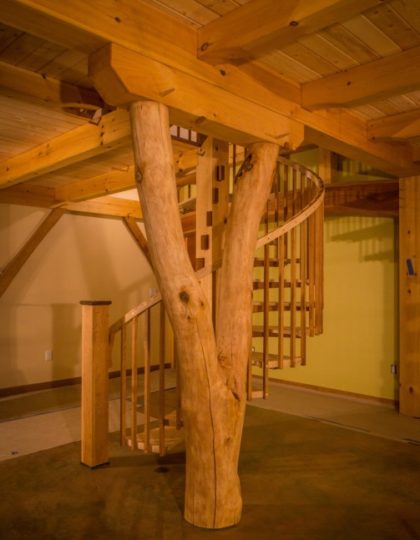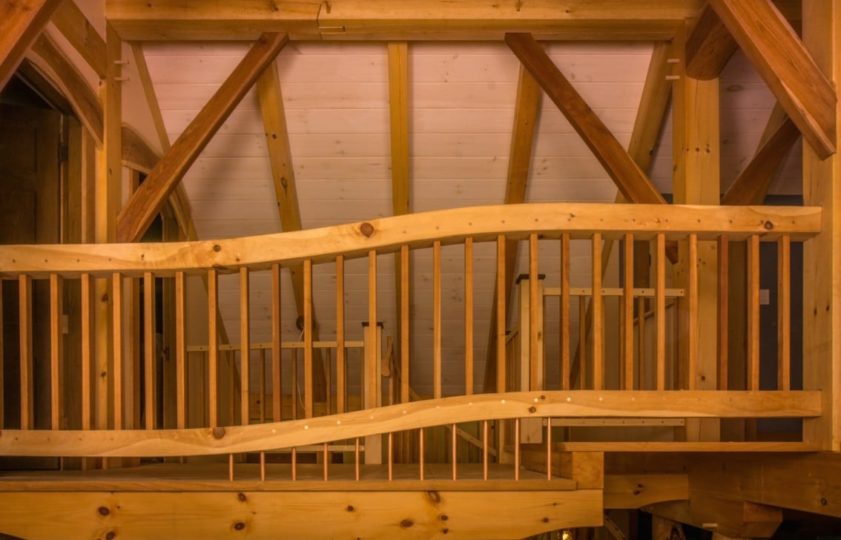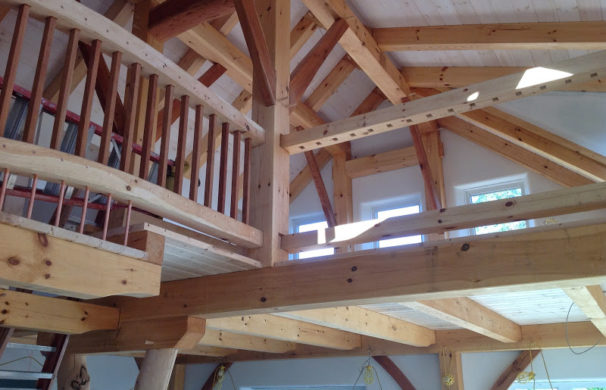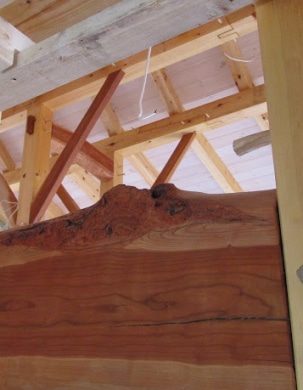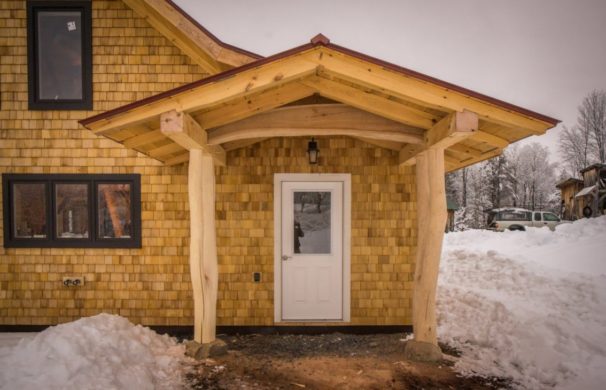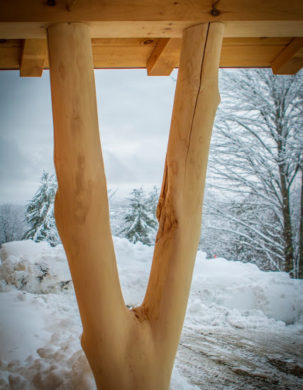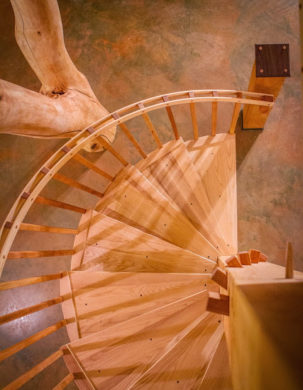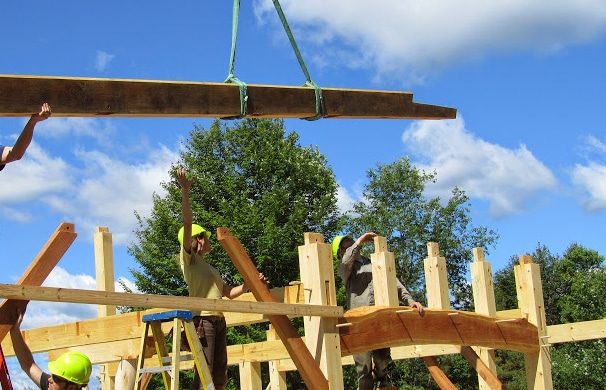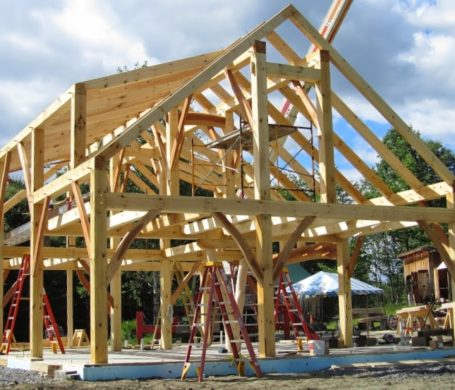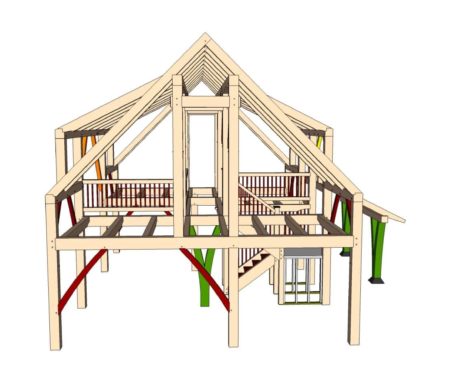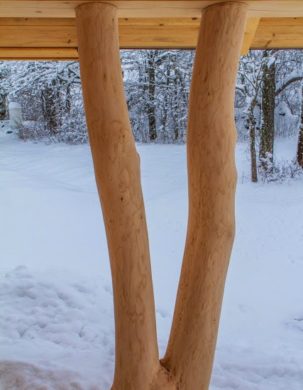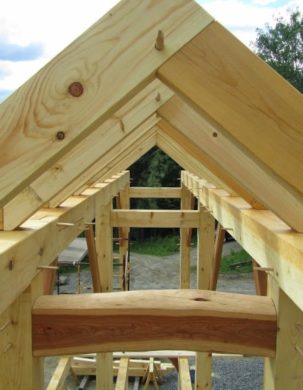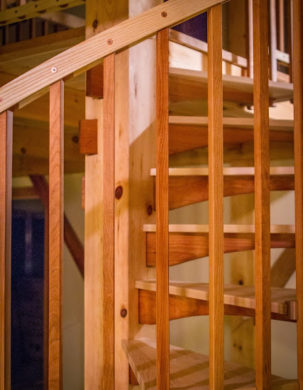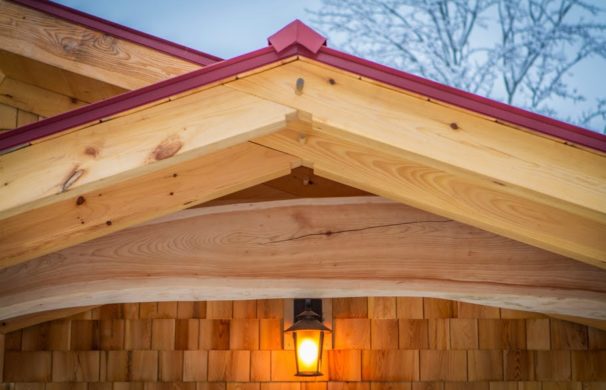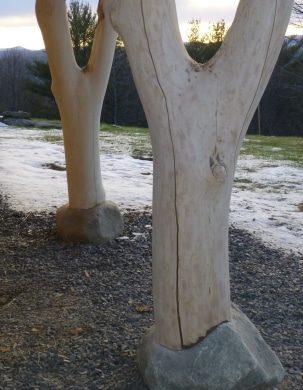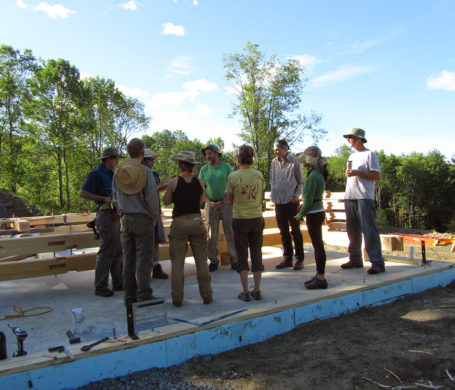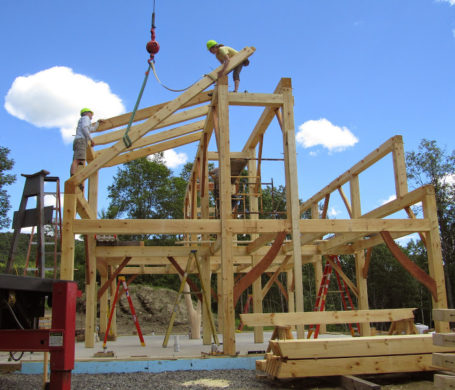A Classic Frame with Curves and Color
This project is a great example of blending the straight lines and square corners of a classic timber frame with the organic and curved elements of natural tree forms. The two-story frame is the structural component of a high performance home in Vermont and is the most defining feature of the house. The main components of the frame were cut from local white pine. The braces were made from local cherry, which was sawn along the natural curve of the grain and shaped by hand.
A Warm Welcome
Walk up to either side of this home, and you’ll be greeted by two forked posts, standing like sentries, carrying generous entry roofs. The forks are anchored and fitted to round fieldstones. Few things are as welcoming as a covered entry—a sign of shelter and hospitality.
In Japanese tradition, a single curved “taiko” beam is often included in a rectangular frame as a tribute to the trees that gave life to the building. This frame is adorned with as many curved beams as is elegant, but one in particular stands out as the taiko—a deep red cherry tree that arches over the space between the entry hall and the main house, another sign of welcome. The beam was scribed and meticulously fit into three small posts that then join to the main wall plate.
Step through the arch, and you’ll be greeted by another forked tree carrying a main beam in the kitchen, and a hand-crafted spiral staircase. The treads of the staircase are tenoned into a rectangular post, which helps carry a curving bridge connecting the two upstairs living spaces.
Queen Post Frames Offer Design Advantages
Queen post frames like this one form a central aisle in a building, which works well with the floor plan in most homes and allows doors and windows to be centered on the gable ends. These characteristics make queen posts a popular choice, and many of our homes have been framed in this style.
